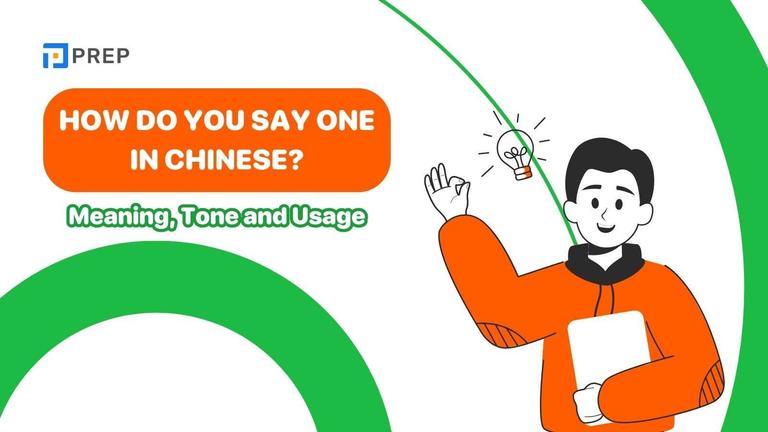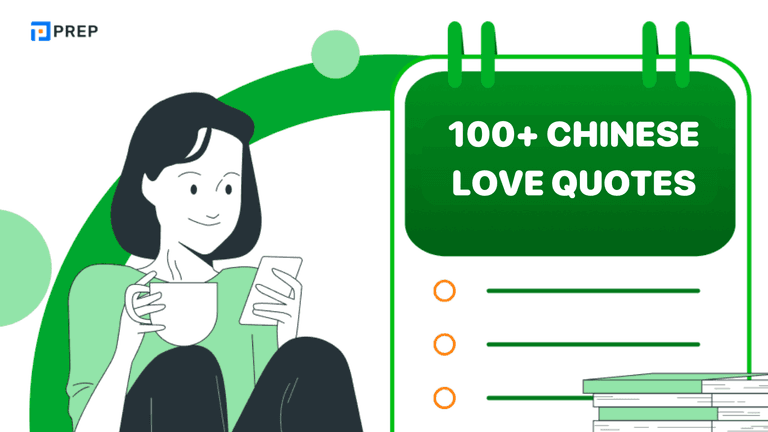A Definitive Guide to Understanding and Learning Classical Chinese
The written treasures of ancient China hold secrets that span millennia, yet remain remarkably accessible to modern learners who understand the key. Classical Chinese represents one of humanity's most enduring literary traditions, serving as the scholarly language that unified East Asian civilization for over two thousand years. This comprehensive guide will illuminate the path from curiosity to competence, providing you with the knowledge and tools needed to unlock these timeless texts.
I. What Exactly is Classical Chinese (文言文)?
1. A Language Frozen in Time, Read Across Millennia
Classical Chinese, known as Wényánwén (文言文), stands as the formal written standard that dominated Chinese literature, philosophy, and official documentation from approximately 500 BCE through 1912 CE. Unlike spoken vernaculars that evolved continuously, this literary language maintained remarkable stability across centuries, allowing modern readers to access texts written during the Han Dynasty with the same grammatical framework used in Qing Dynasty documents. This temporal consistency makes classical Chinese uniquely accessible compared to other ancient languages, where texts separated by mere centuries often require specialized knowledge of different linguistic phases.
The language emerged during the Warring States period when scholars needed a standardized medium for recording philosophical discourse and administrative records. Rather than representing any single spoken dialect, classical Chinese developed as a refined, artificial construct designed specifically for written communication.
2. The Critical Distinction: Classical Chinese vs. Modern Mandarin
Understanding the fundamental differences between classical Chinese and contemporary Mandarin prevents common misconceptions that often derail beginning students. These two forms of Chinese represent entirely different approaches to organizing thought and expression, despite sharing the same character system.
|
Feature |
Classical Chinese (文言文) |
Modern Mandarin (普通话) |
|
Nature |
Literary & written only |
Spoken & written |
|
Grammar |
Monosyllabic, analytic, context-heavy |
Polysyllabic, clearer function words |
|
Conciseness |
Extremely dense and economical |
More verbose, closer to speech patterns |
|
Vocabulary |
Single characters as words |
Two-character compounds predominant |
|
Function words |
Minimal, context-dependent |
Explicit particles and markers |
Classical Chinese functioned as the Latin of East Asia, serving as the lingua franca for educated elites across China, Japan, Korea, and Vietnam. Just as medieval European scholars wrote treatises in Latin regardless of their native tongues, East Asian intellectuals composed poetry, philosophy, and official documents in classical Chinese text formats. This shared literary tradition created a remarkable cultural unity that transcended political boundaries and spoken languages, allowing a Japanese monk to read Chinese philosophical texts and a Korean official to correspond with Chinese colleagues using identical grammatical structures.
II. Why This Ancient Language Still Matters Today
1. The Original Voice of Foundational Philosophy
Reading classical Chinese provides direct access to foundational texts that shaped East Asian thought. When Confucius declared "學而時習之,不亦說乎" (Is it not a pleasure to study and practice what you have learned?), the original conveys nuances that diminish in translation.
Key texts revealing deeper meaning through direct reading:
-
The Tao Te Ching - philosophical subtleties preserved
-
Sun Tzu's Art of War - strategic precision maintained
-
Mencius's dialogues - ethical arguments retain logical flow
These works continue influencing modern business strategy and political philosophy worldwide, allowing readers to distinguish authentic interpretations from translator bias.
2. The Administrative Backbone of Imperial China
Classical Chinese served as the exclusive medium for official communications and historical records throughout imperial history. Sima Qian's Records of the Grand Historian established narrative techniques that influenced historiography for centuries.
Imperial examination candidates mastered classical Chinese for government service, making proficiency synonymous with political power. Modern scholars must engage with classical Chinese translator tools to access primary sources revealing administrative practices and social conditions.
III. Your Path to Reading the Sages: A Step-by-Step Plan for the Modern Learner
1. Is This Journey for You? A Realistic Assessment
Learning classical Chinese represents a serious intellectual commitment that resembles reading Shakespeare or Chaucer—challenging initially, but offering profound cultural rewards. Most successful students treat this as a fulfilling long-term hobby, requiring patience with grammatical ambiguity and genuine curiosity about Chinese culture. Students who enjoy solving puzzles, appreciate literary sophistication, and possess basic familiarity with Chinese characters typically find the learning process engaging rather than frustrating.
2. How To Learn Classical Chinese?
Self-directed classical Chinese study is entirely achievable with the right resources and systematic approach. Success depends on matching your current skill level with appropriate materials and realistic expectations for each learning phase.
-
Beginners:
Start with modern Mandarin foundation (HSK 3-4 level) before attempting classical texts. Use beginner textbooks like Rouzer's "A New Practical Primer of Literary Chinese" with structured lessons and exercises. Focus on memorizing the twenty most common function words (虛字) and practice with simple parallel texts. Expect 6-12 months to develop basic reading comprehension with consistent daily study.
-
Intermediate:
Transition to reading short classical poems and selected Analects passages without constant translation reference. Expand function word knowledge to fifty key particles and begin recognizing common sentence patterns.
Use the Chinese Text Project (ctext.org) for accessing varied texts with parallel translations. Develop comfort with grammatical ambiguity and contextual interpretation over 12-18 months of regular practice.
-
Advanced:
Read complete classical texts like Mencius dialogues or historical narratives with minimal translation assistance. Study classical Chinese poetry systematically, focusing on Tang masters like Li Bai and Du Fu.
Begin engaging with scholarly commentaries and multiple interpretations of difficult passages. This level typically requires 2-3 years of dedicated study to achieve comfortable reading fluency.
-
Expert/Academic:
Conduct independent research using classical Chinese primary sources, compare different textual versions, and engage with scholarly debates about interpretation. Develop specialized knowledge in particular periods, genres, or authors. Academic expertise requires 5+ years of intensive study, often including formal coursework and mentorship from established scholars in the field.
3. The Apprentice's Method - Reading with Parallel Texts
Parallel text reading represents the most effective technique for developing classical chinese comprehension skills. This method involves studying classical chinese text alongside modern Chinese or English translations, allowing students to observe how classical structures express ideas compared to contemporary language patterns.
Starting with Classical Poetry:
Classical Chinese poetry provides an ideal entry point for beginners because poems follow predictable structural patterns while expressing profound emotions and imagery. Tang Dynasty poetry typically uses five or seven-character lines with consistent rhyme schemes, making grammatical patterns more apparent than in prose texts.
Consider this famous Tang poem by Jia Dao:
松下問童子,言師採藥去。只在此山中,雲深不知處。
-
The literal structure reads: "Under pine ask boy child, said master gather medicine gone. Only at this mountain's middle, clouds are deep not know place."
-
The interpretive translation becomes: "Beneath the pine trees I asked a young servant. He said his master went gathering herbs. Somewhere in these mountains only, but clouds are deep—the place unknown."
Notice how classical Chinese poetry omits subjects, conjunctions, and explicit grammatical markers that modern languages require. The reader fills these gaps through contextual understanding and cultural knowledge.
IV. Recommended Books for Learning Classical Chinese
Selecting appropriate textbooks determines learning efficiency and long-term success in classical Chinese study. Different books serve different learning stages and preferences, from systematic beginners' guides to advanced cultural analysis.
1. Essential Beginner Textbooks
-
Paul Rouzer's "A New Practical Primer of Literary Chinese" offers exceptional clarity for newcomers, presenting grammatical concepts systematically with extensive practice exercises. The book excels at breaking down complex structures into manageable lessons with clear explanations.
-
Michael Fuller's "An Introduction to Literary Chinese" provides deeper cultural context and sophisticated textual analysis for students seeking comprehensive understanding. Fuller emphasizes historical development and literary tradition alongside grammar instruction.
2. Intermediate to Advanced Resources
-
"Classical Chinese: A Basic Reader" by Paul Rouzer serves as an excellent follow-up, featuring carefully selected texts with detailed annotations and cultural background. The progression from simple to complex passages helps bridge the gap between textbook exercises and authentic classical texts.
-
"How to Read Chinese Poetry: A Guided Anthology" by Cai Zong-qi offers systematic introduction to classical Chinese poetry with parallel translations and detailed analysis of poetic techniques and cultural themes.
V. Quick Answers: Your Classical Chinese FAQ
1. Is Classical Chinese the same as Traditional Chinese?
No, they are fundamentally different things:
-
Classical Chinese (文言文) represents a language—a specific style of grammar and vocabulary used for formal writing throughout Chinese history.
-
Traditional Chinese (繁體字) represents a script—one of the two standard sets of modern Chinese characters, the other being Simplified characters.
It resembles asking whether Old English equals the Latin alphabet—one describes language structure while the other describes writing system. Classical Chinese texts are almost always written using Traditional characters, which creates confusion, but the relationship remains analogous to content versus container.
2. What is the difference between modern and Classical Chinese?
The difference resembles the gap between Latin and modern Italian—both significant and systematic. Usage differs fundamentally: classical Chinese served exclusively for formal writing while Modern Chinese functions as a complete living language for daily speech and all writing forms. Grammar operates on contrasting principles: classical chinese achieves extreme conciseness through context-dependent structures while modern grammar provides explicit markers and follows speech patterns more closely. Vocabulary approaches also diverge: classical Chinese employs single characters as independent words while Modern Chinese heavily favors two-character compound words for clarity and precision.
3. Is Classical Chinese still spoken?
No, classical Chinese was never a primary spoken vernacular language for general populations throughout Chinese history. It developed as a formal, literary standard specifically designed for written communication among educated elites.
While regional dialects evolved continuously, classical Chinese maintained deliberate separation from colloquial speech patterns to preserve its role as a trans-regional, trans-temporal written medium. Today, scholars and enthusiasts worldwide read and study classical Chinese extensively, but it functions purely as a literary language rather than conversational medium.
VI. Conclusion
Classical Chinese opens doorways to understanding one of humanity's most sophisticated and enduring literary traditions. Through systematic study of its unique grammatical structures, mastery of essential function words, and careful practice with parallel texts, modern learners can access the original voices of philosophers, poets, and historians who shaped East Asian civilization.
The journey requires dedication and patience, but rewards include direct engagement with foundational texts that continue influencing contemporary thought and culture worldwide. Whether your interests lie in philosophy, history, literature, or cross-cultural understanding, classical Chinese literacy provides tools for deeper comprehension and appreciation of ideas that transcend temporal and geographical boundaries.

Hi I'm Chloe, and I am currently serving as an Product Content Administrator at Prep Education. With over five years of experience in independent online IELTS study and exam preparation, I am confident in my ability to support learners in achieving their highest possible scores.
Comment
Premium content
View allPersonalized roadmap
Most read












